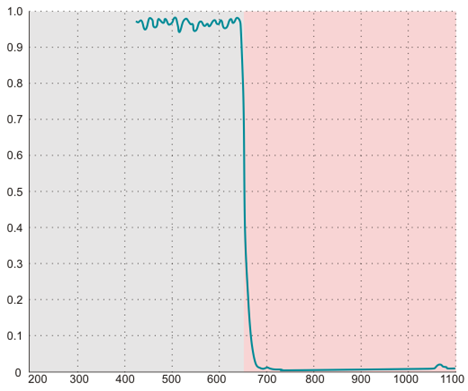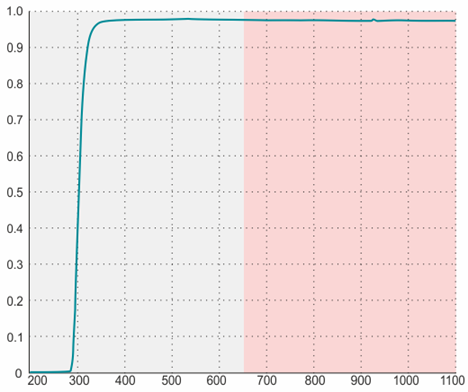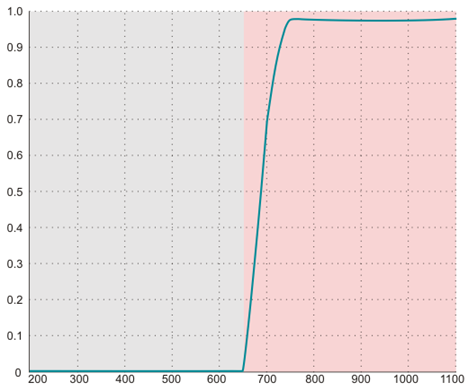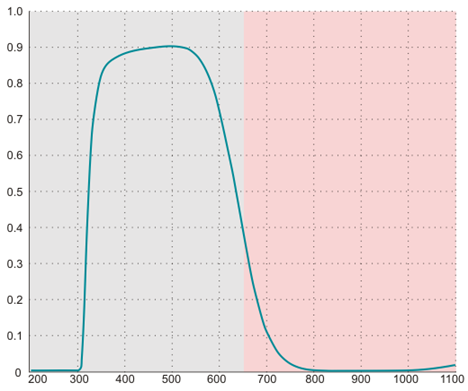IDS Software Suite 4.96.1
Every camera has a filter glass in the front flange to prevent the entry of dust particles. Color cameras by default use an IR cut filter (type HQ), which is required to ensure correct color rendering. For monochrome cameras, the standard filter is a glass filter (type GL). Every camera model is available with different filter variants such as daylight cut filters (type DL). The filter type is given at the end of the model name.
The following table shows an overview of the different optical filters used in IDS cameras:
Filter type |
Name |
Refractive index |
Glass type |
Thickness (f) |
Cut-on wavelength |
Cut-off wavelength |
Non-reflective |
|---|---|---|---|---|---|---|---|
IR cut filter |
HQ |
1.53 |
D263 |
1 mm |
- |
650 ±10 nm |
On one side |
Glass |
GL |
1.53 |
D263T |
1 mm |
330 nm |
- |
On both sides |
Daylight cut filter |
DL |
1.53 |
RG695 |
1 mm |
695 nm |
- |
- |
IR cut filter (old) |
BG |
1.53 |
BG40 |
1 mm |
|
650 nm |
- |
You can tell the filter type from the outside by its coloration:
•Reddish glass: HQ filter
•Plain glass: GL filter
•Opaque glass: DL filter
•Bluish glass: BG filter
 |
All sensors have a cover glass. The transmission of the cover glass is taken into account in the camera data sheet. |
Infrared cut filter (type HQ)

Fig. 697: HQ filter
Plain glass filter (typ GL)

Fig. 698: Glass filter
Daylight cut filter (type DL)

Fig. 699: DL cut filter
Infrared cut filter (type BG)

Fig. 700: BG filter
New color cameras use an IR cut filter of the type HQ by default. This filter offers an improved accuracy of the infrared content. HQ filters achieve a higher image brightness and better color rendering compared with the BG filter.
<%IDS-SOFTWARE-SUITE%> of version 3.24 and higher determine automatically which the IR filter is used in a camera. The corresponding color correction is selected automatically.